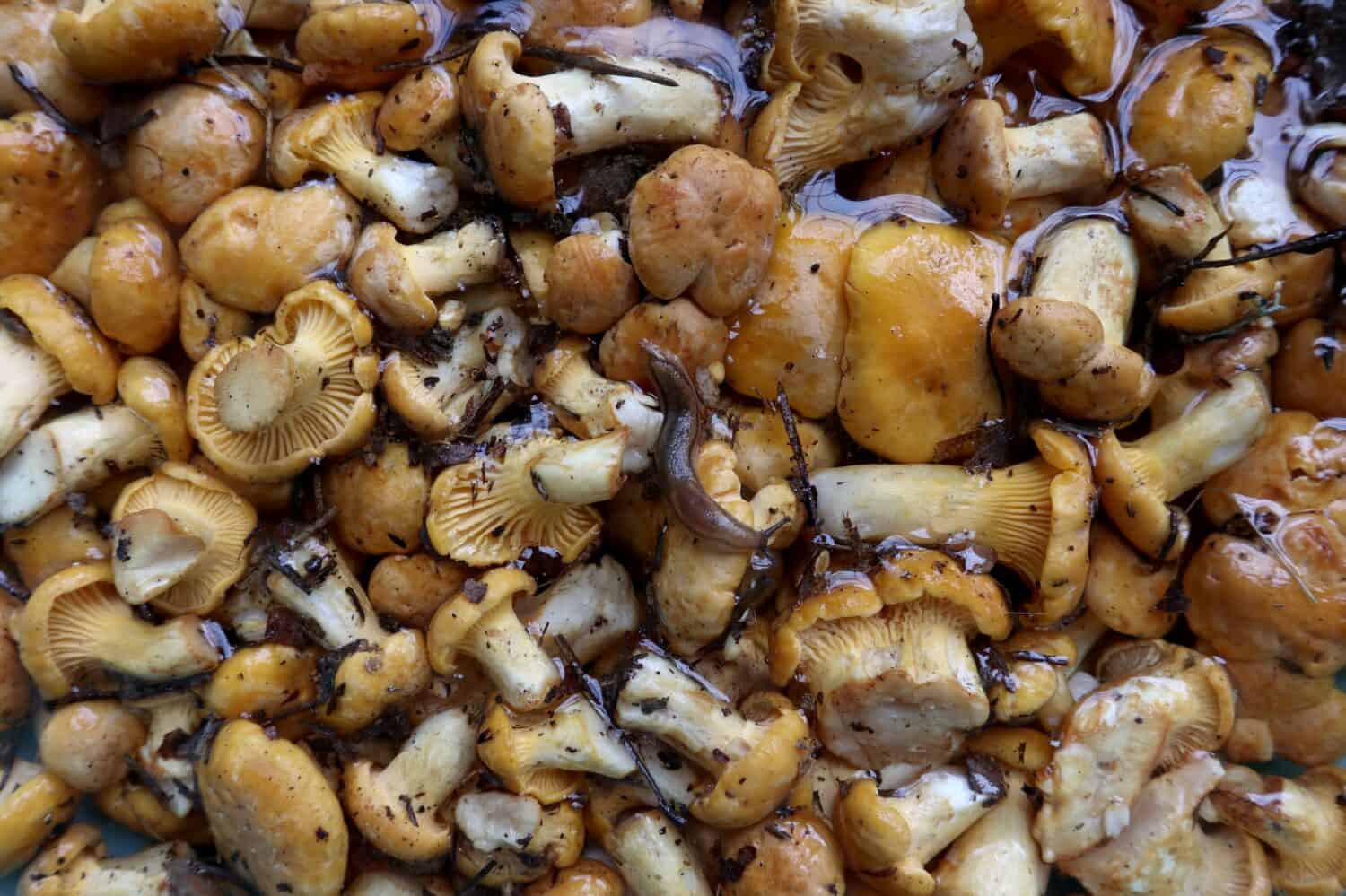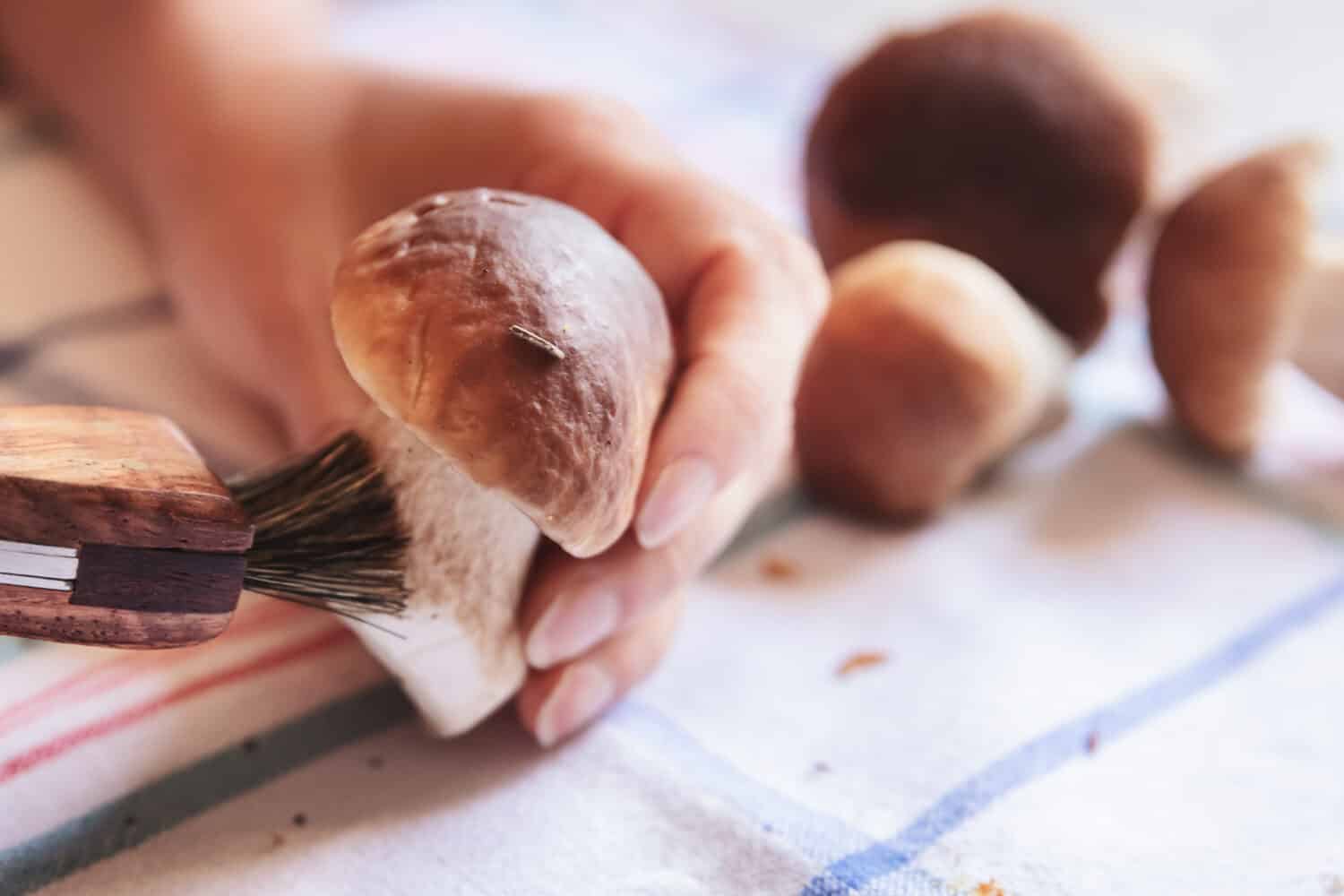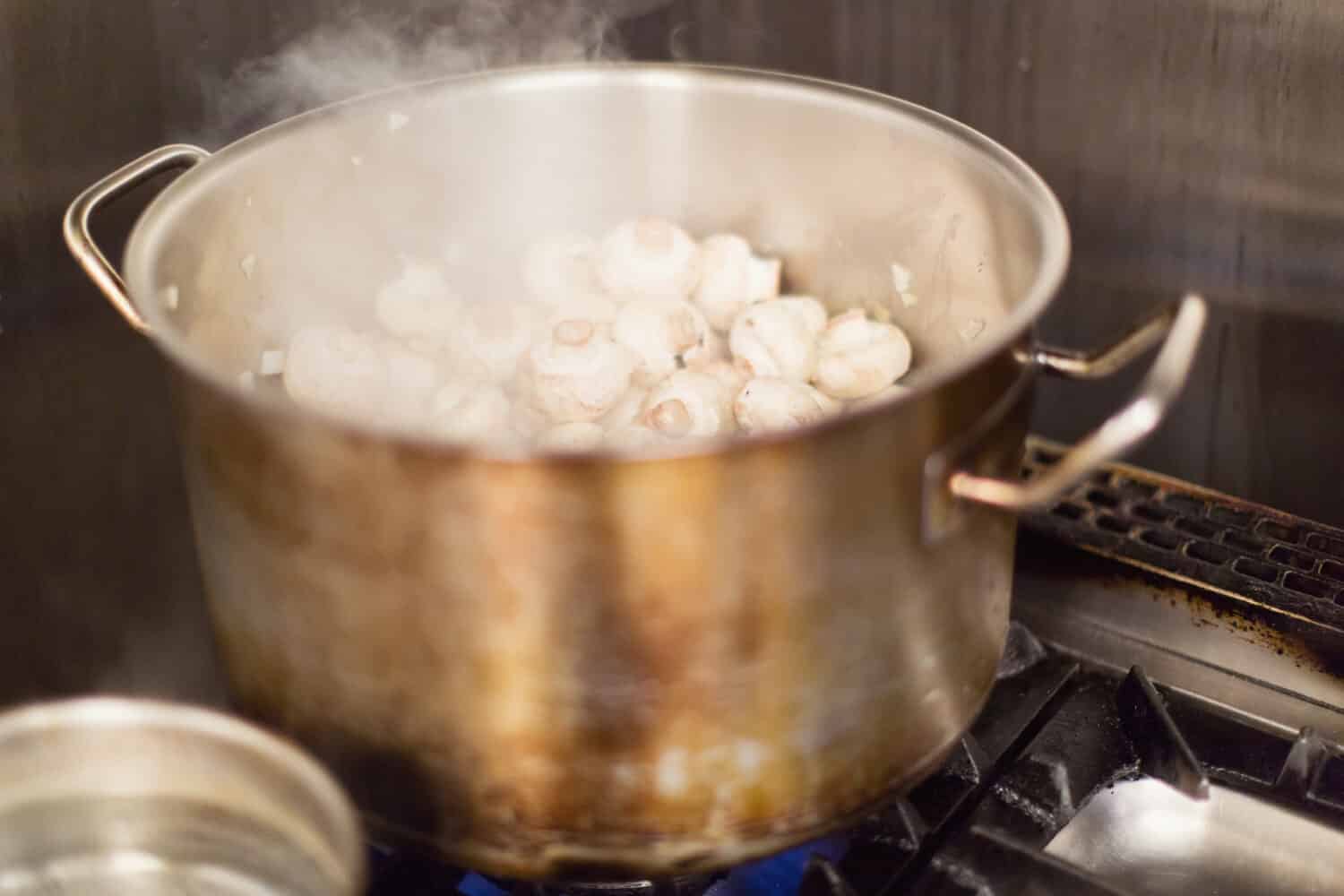When foraging for wild mushrooms it is important to field dress them or at least lightly clean them before putting them into your basket. Even then, after picking mushrooms, you will often need to do some supplementary cleaning of them. Most methods involve dry cleaning mushrooms, rather than washing them to preserve their integrity. However, there is a method to washing mushrooms that won’t leave them too water-logged.
Read on to learn how to wash mushrooms effectively as well as some alternative methods for cleaning your harvest.

Wild-harvested mushrooms can be covered in dirt, wood debris, and bugs.
©Nikvalmary/Shutterstock.com
Why Do You Need to Clean Foraged Mushrooms?
Most of the time, freshly foraged wild mushrooms have some amount of dirt and wood debris on them. Often, tiny bits of this dirt and debris end up settled in between the harder-to-clean areas. The spore-dispersal tissues, such as gills or teeth can be especially difficult to clean. You may also see a few itty bitty insects dotted throughout the mushroom. As such, most people prefer to spend a few minutes thoroughly cleaning their wild mushrooms before cooking them.
Most Recommended Cleaning Method
Foraging and cooking up wild harvested mushrooms can sound perfectly romantic, and in many ways, it is. But the cleaning process can be quite labor-intensive for some sought-after species. It might be tempting to quickly spray down the mushrooms with water or soak them in a bowl before popping them in a pan. However, you may quickly regret this as your gorgeous harvest won’t brown or caramelize nicely since it’s absorbed too mush water. As such, even though it can be quite tedious, dry cleaning mushrooms is the most recommended method for most species as it won’t lead to your mushrooms becoming soggy.
It is time consuming, but brushing in all of the nooks and crannies of the mushroom ensures a delicious meal that isn’t tarnished by a mouthful of gritty dirt. The most dirt is often clinging to the bottom of the stem (aka the stipe) of the mushroom. You can save time by simply cutting off the base, which is often a bit tough to eat on many species anyways.
Some robust mushrooms, such as chanterelles can deal with a quick rinse and/or soak without causing any problems, but that just isn’t the case with many mushrooms that have deep gills like oysters or pores like porcini.
If you’re set on washing or soaking them, however, there is a method that is least likely to leave your mushrooms soggy. Below, we’ll discuss the best manner of using water to clean your mushrooms.

Brushing your porcini is the best method, but it can be quite labor intensive.
©Miriam Doerr Martin Frommherz/Shutterstock.com
How to Wash Mushrooms Without Leaving Them Soggy
Some mushrooms are quite porous and those species tend to act like a sponge. Soaking mushrooms in a bowl or water or rinsing them in the sinks typically leads to mushrooms that become water-logged and won’t brown nicely when cooked.
An exception is if your goal is to boil or parboil the mushrooms. At this point, soaking them or rinsing them under running water is a fine plan. Boiling isn’t the cooking method of choice for most mushrooms, however, as it doesn’t really allow the flavors to develop and shine the way sautéing in butter, salt, and garlic does. One popularly foraged group of mushrooms, honey mushrooms, however, are sometimes boiled for a little while before sautéing to reduce the risk of GI upset. You can still dry your mushrooms after boiling them and sauté them up in hopes of better texture and browning.
If you want to maintain the integrity of the mushrooms while using water, the secret is a damp cloth or brush. Rather than rinsing or soaking, you can clean the mushroom with a dampen cleaning brush or a cloth. However, you’ll usually still want to dry clean first to efficiently remove loose dirt and debris before adding water. If you start with a damp tool, you may find that the mushroom becomes quite streaked with dirt. So, it’s best to still brush away everything that comes off easily with a dry implement. After, you can remove any hard-to-reach grit with your damp cloth or brush. Finally, pat down the mushrooms with a dry paper towel. The result will be clean foraged mushrooms that will still brown beautifully when sautéing.

If you’re going to boil your mushrooms, you can go ahead and wash them beforehand. If not, ideally opt for dry cleaning or damp brushing.
©love lila photography/Shutterstock.com
The photo featured at the top of this post is © Jelena Zelen/Shutterstock.com
The information presented on or through the Website is made available solely for general informational purposes. We do not warrant the accuracy, completeness, or usefulness of this information. Any reliance you place on such information is strictly at your own risk. We disclaim all liability and responsibility arising from any reliance placed on such materials by you or any other visitor to the Website, or by anyone who may be informed of any of its contents. None of the statements or claims on the Website should be taken as medical advice, health advice, or as confirmation that a plant, fungus, or other item is safe for consumption or will provide any health benefits. Anyone considering the health benefits of particular plant, fungus, or other item should first consult with a doctor or other medical professional. The statements made within this Website have not been evaluated by the Food and Drug Administration. These statements are not intended to diagnose, treat, cure or prevent any disease.
Thank you for reading! Have some feedback for us? Contact the AZ Animals editorial team.







